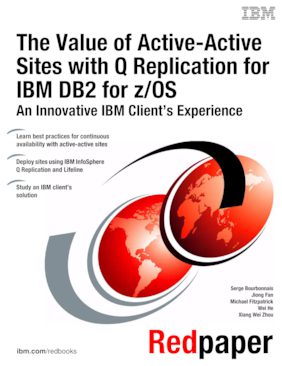Abstract
Any business interruption is a potential loss of revenue. Achieving business continuity involves a tradeoff between the cost of an outage or data loss with the investment required for achieving the recovery point objective (RPO) and recovery time objective (RTO).
Continuous system availability requires scalability, as well as failover capability for maintenance, outages, and disasters. It also requires a shift from standby to active-active systems. Active-active sites are geographically distant transaction processing centers, each with the infrastructure to run business operations and with data synchronized by using database replication, such as the Q Replication technology that is part of IBM® InfoSphere® Data Replication software.
This IBM Redbooks® publication describes preferred practices and introduces an architecture for continuous availability and disaster recovery that is used by a very large business institution that runs its core business on IBM DB2® for z/OS® databases. This paper explains the technologies and procedures that are required for the implementation of an active-active sites architecture. It also explains an innovative procedure for major IT upgrades that uses Q Replication for DB2 on z/OS, Multi-site Workload Lifeline, and Peer-to-Peer Remote Copy/Extended Distance (PPRC-XD).
This paper is of value to decision makers, such as executive and IT architects, and to database administrators who are responsible for design and implementation of the solution.
Table of Contents
Chapter 1. Continuous availability with an active-active sites architecture
Chapter 2. The technologies necessary for active-active sites
Chapter 3. Prerequisites and considerations for deploying active-active sites
Chapter 4. How active-active sites can eliminate outages during IT upgrades
Chapter 5. Case study: An IBM client's architecture for disaster recovery and continuous availablity
Chapter 6. A client's procedure for major upgrades with active-active sites
Chapter 7. The zero-downtime copy procedure with PPRC and PPRC-XD
Appendix A. Appendix
